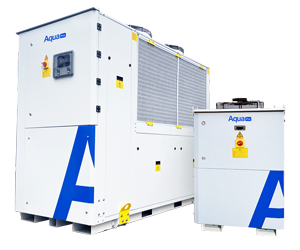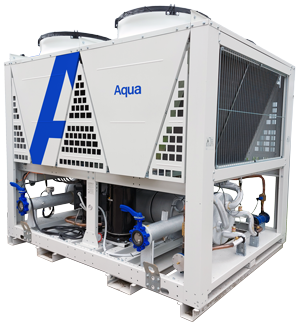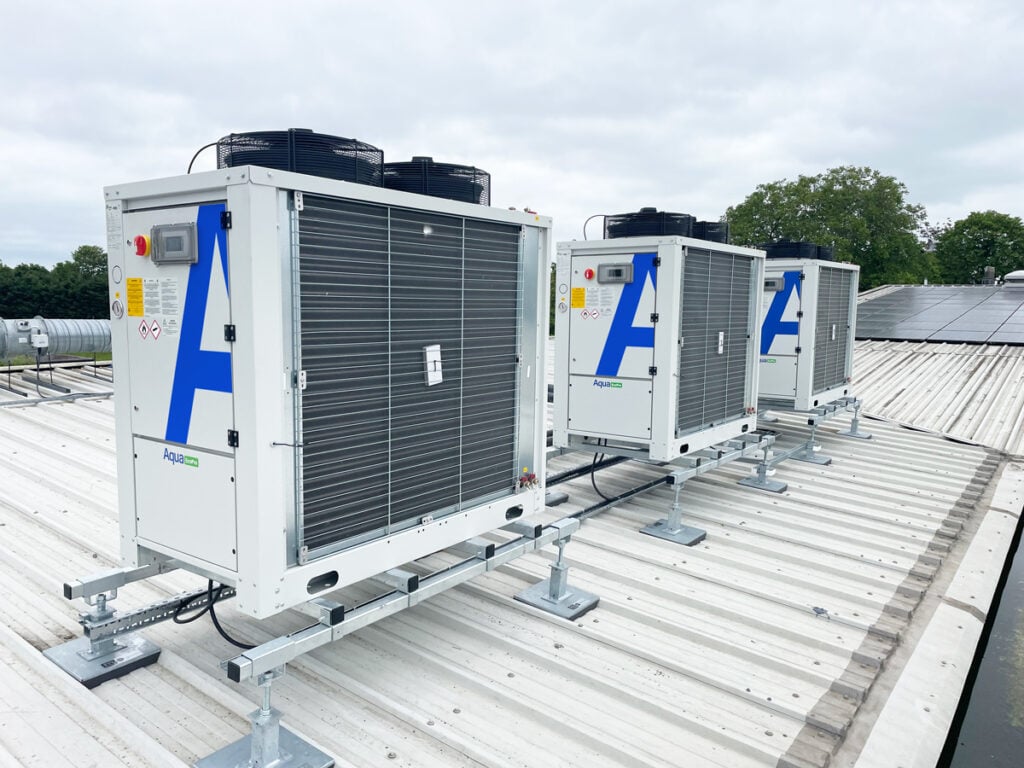The Client –
Leading Packaging Manufacturer
The Challenge –
Issues Reaching Desired Process Temperature During Warmer Weather
The Solution –
Cooling System Incorporating Chiller, Free Cooler, Pipework & Pumps
A leading manufacturer and supplier of recyclable, flexible packaging solutions contacted us after experiencing issues with reaching their desired process temperature, in warmer weather.
Our Senior Sales Engineer, Mark Hopper explains how we helped them improve the reliability of their process cooling, future proofed their system for expansion and enabled them to make significant energy savings, every year.
Situation
As part of the manufacturing process, a water-cooled chiller with integrated free cooling is used to cool a gear box heat exchanger and cooling for air cooling rings, but in the summer months, the equipment struggles to maintain the required temperature.
In addition to this, full free cooling is only available at -3°C, meaning that a large proportion of free cooling isn’t being taken advantage of throughout the year – resulting in higher energy costs.
Due to the setup, the current system is preventing the manufacturer from growing production capacity and inconsistent process temperatures are creating more wastage and higher energy costs.
Solution
From our initial site survey and consultation, we determined that an additional 160kW of cooling duty was required to maintain the temperature of the gear box heat exchanger and identified that the galvanised pipework was causing water purity issues and blockages.
We designed a new system which included stainless steel pipework (lagged to prevent against thermal losses and condensation), pumps, a new chiller and a standalone free cooler with the existing chiller installed as a back-up.
The process requires the water temperature to be maintained at 16°C, so through the control panel, we set the free cooler to operate when the ambient temperature is up to 14°C, anything over this and a 3-way valve will divert, bypassing the free cooler. The internal chiller pump will then draw water from the process tank and cool it in the evaporator. The water is then driven back to the process by a dual inverter driven pump set.
To ensure a continued operation and cooling to the gear box heat exchanger, we installed the new system alongside the existing one. Once the chiller and free cooler had been commissioned and tested, we connected it to the gear box heat exchanger and removed the old system, including pipework.
To enable further cooling requirements to be easily and cost-effectively catered for in the future, we installed two full sized valves within the pipework.
Results
In just 12 weeks from receiving the enquiry, we had the equipment craned in and the new, more reliable cooling system installed, with capability for expansion.
We estimate that the free cooler will reduce running costs from £89,040 to £41,512, creating a saving of £47,528 per annum, as well as boosting the manufacturer’s green credentials.
You can download the full case study here.








